Abstract
Deibel, R. H. (St. James Hospital, Chicago Heights, Ill.), J. H. Silliker, and P. T. Fagan. Some characteristics of an oleate-requiring, hemolytic Pediococcus. J. Bacteriol. 88:1078–1083. 1964.—A gram-positive, catalase-negative, tetradforming coccus, isolated from a bronchial aspirate, is described. The organism was classified as a member of the genus Pediococcus on the basis of morphological and physiological characteristics. It differed from previously described members of this genus in that it evidenced a requirement for oleic acid, even in complex culture media. This isolate produced hemolysis on blood-agar formulated with certain specimens of human blood and not with others. It was demonstrated that hemolysis required oleate supplementation and that the level of this fatty acid required for hemolysis is greater than that necessary for growth of the organism. A cell-free hemolysin could not be demonstrated in the culture supernatant fluid of oleate-grown cultures. The organism was isolated from a patient suffering from tuberculosis; however, attempts to isolate similar organisms from other tuberculous patients as well as from routine throat and sputum specimens were negative. No pathogenicity was manifested when laboratory animals were inoculated with the hemolytic Pediococcus.
Full text
PDF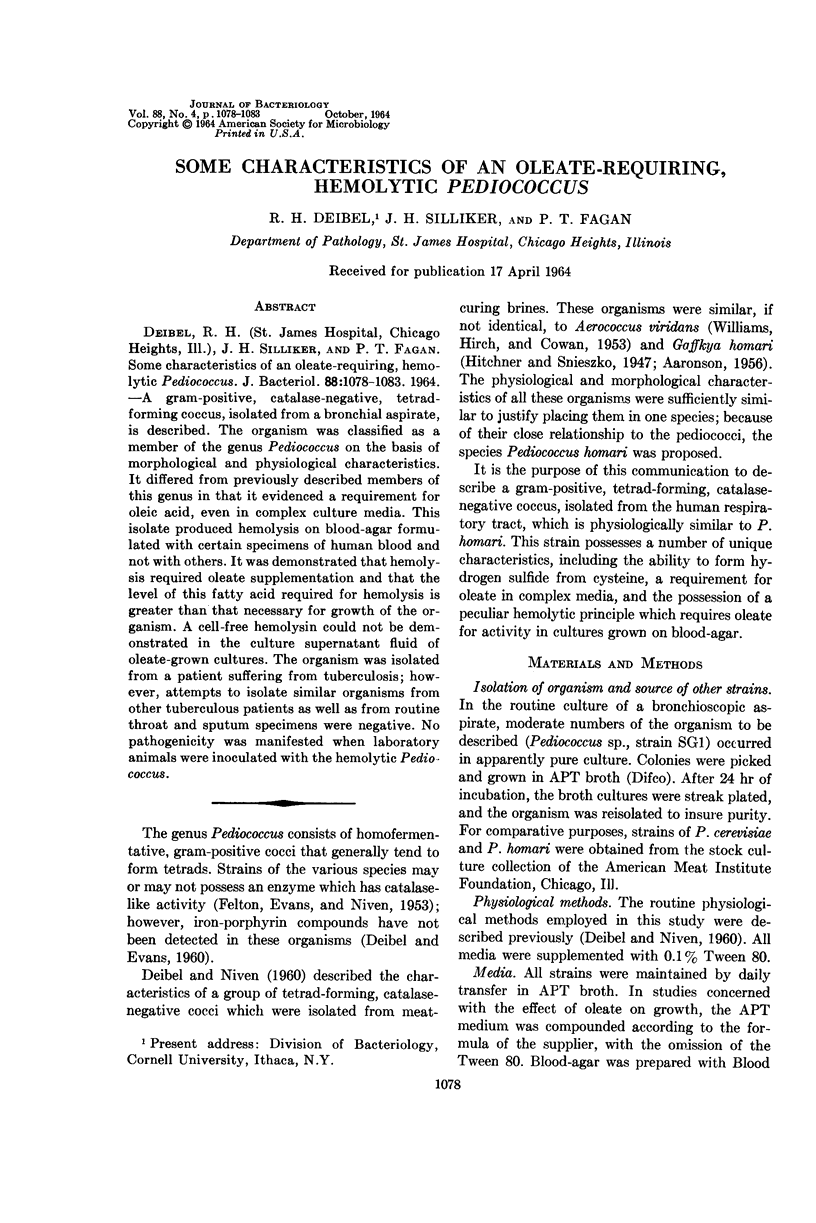
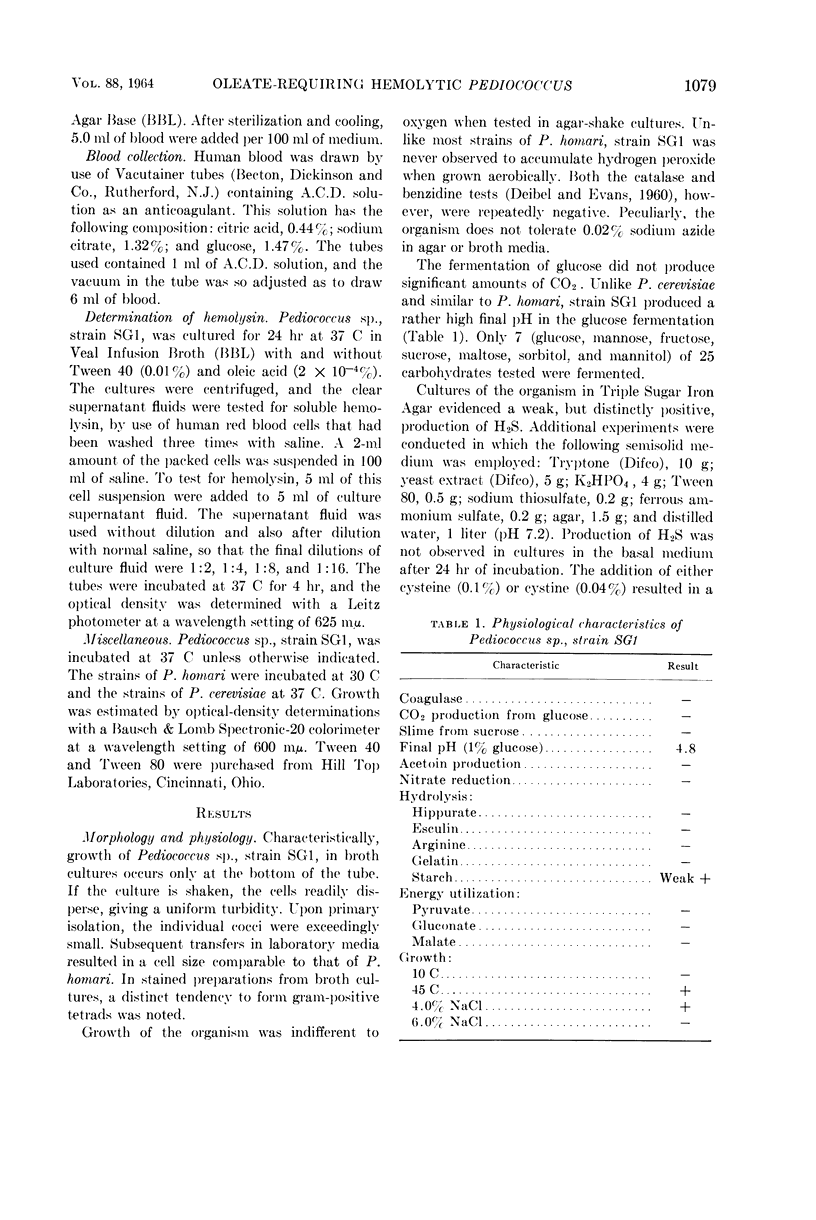

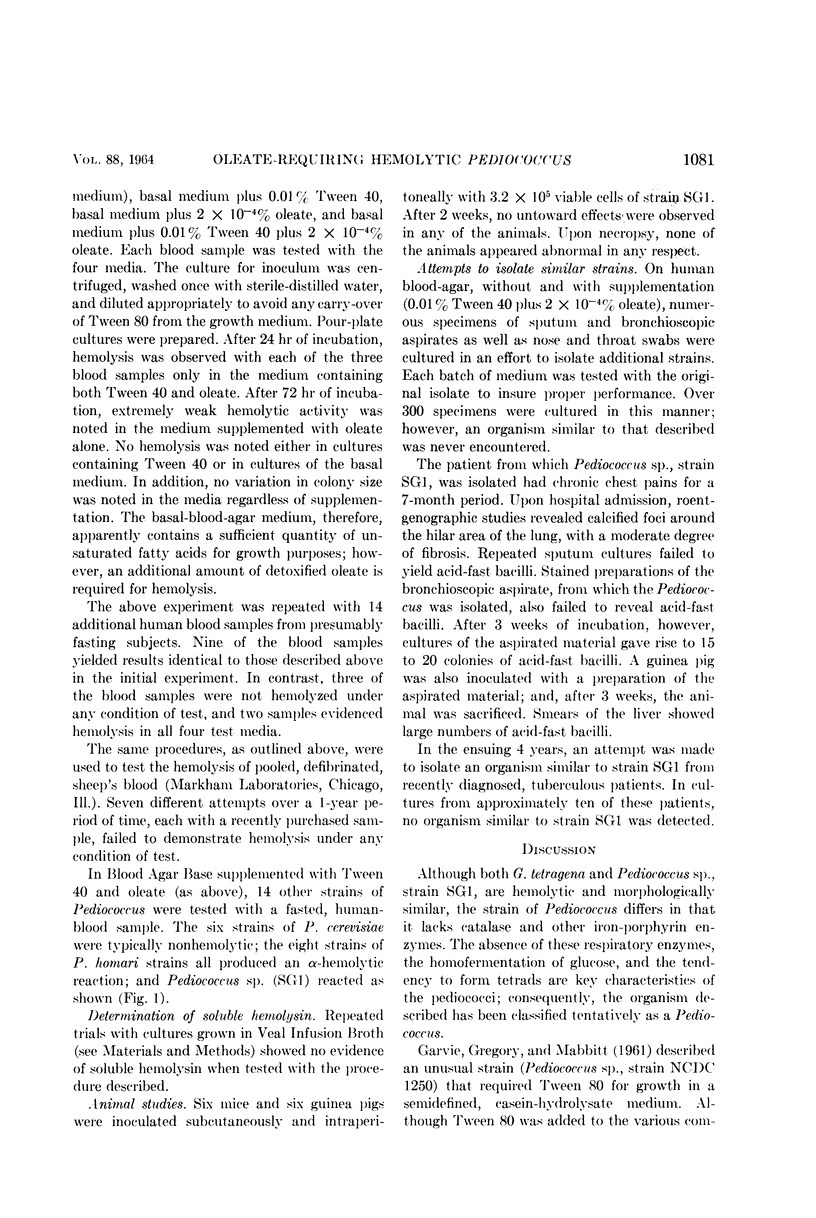
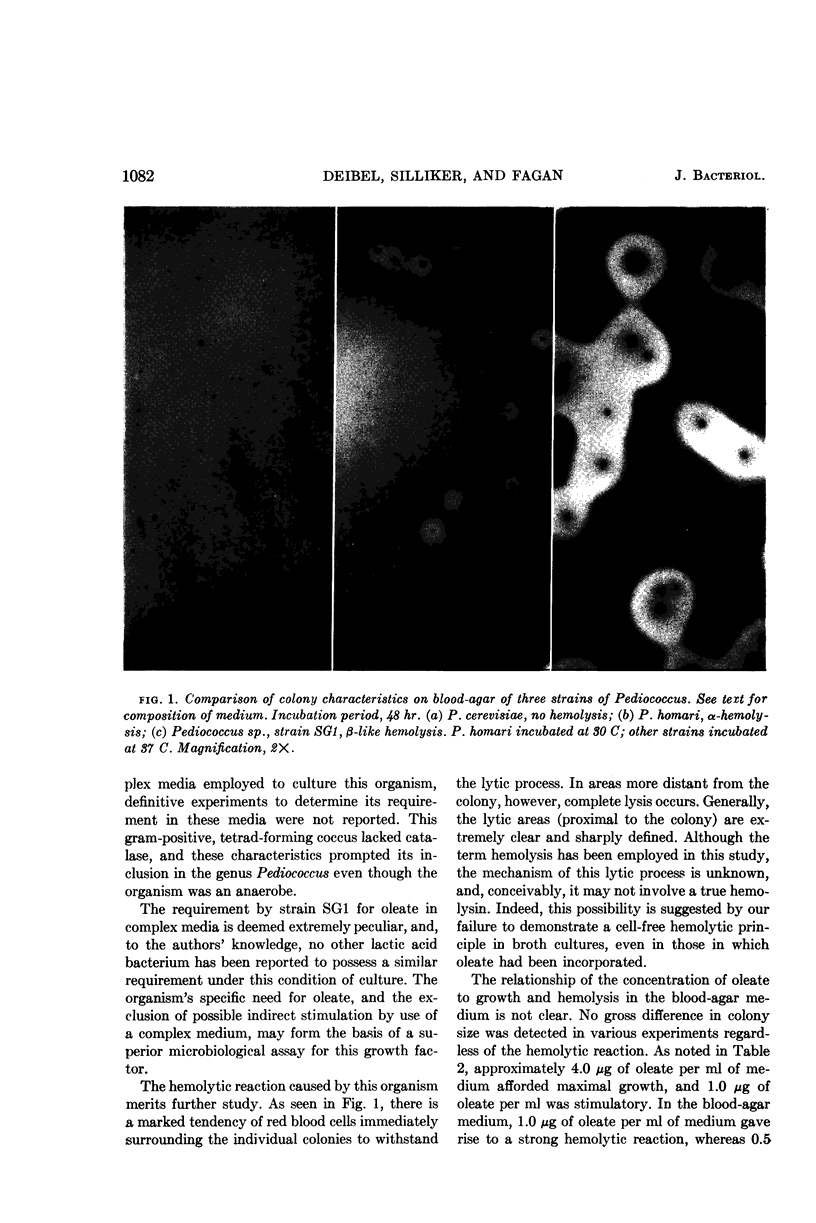
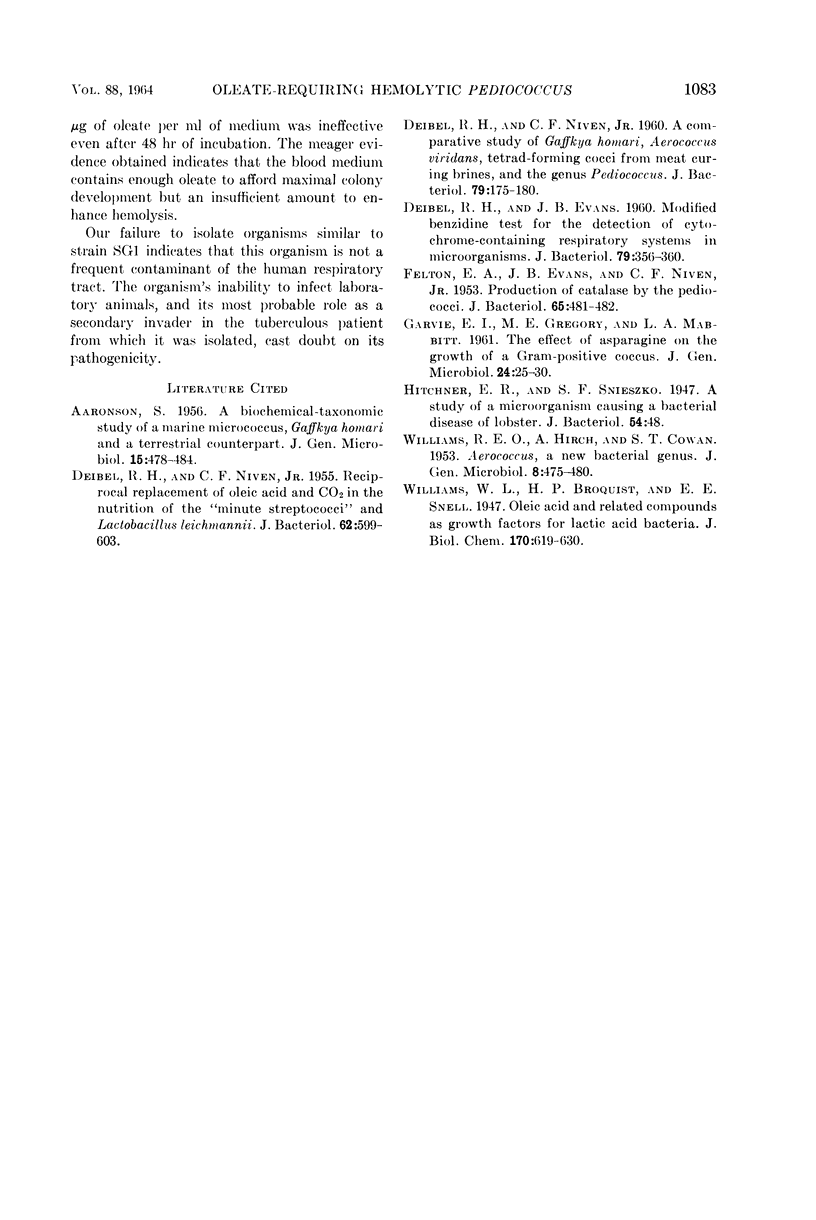
Images in this article
Selected References
These references are in PubMed. This may not be the complete list of references from this article.
- AARONSON S. A biochemical-taxonomic study of a marine micrococcus, Gaffkya homari, and a terrestrial counterpart. J Gen Microbiol. 1956 Dec;15(3):478–484. doi: 10.1099/00221287-15-3-478. [DOI] [PubMed] [Google Scholar]
- DEIBEL R. H., EVANS J. B. Modified benzidine test for the detection of cytochrome-containing respiratory systems in microorganisms. J Bacteriol. 1960 Mar;79:356–360. doi: 10.1128/jb.79.3.356-360.1960. [DOI] [PMC free article] [PubMed] [Google Scholar]
- DEIBEL R. H., NIVEN C. F., Jr Comparative study of Gaffkya homari, Aerococcus viridans, tetrad-forming cocci from meat curing brines, and the genus Pediococcus. J Bacteriol. 1960 Feb;79:175–180. doi: 10.1128/jb.79.2.175-180.1960. [DOI] [PMC free article] [PubMed] [Google Scholar]
- FELTON E. A., EVANS J. B., NIVEN C. F., Jr Production of catalase by the pediococci. J Bacteriol. 1953 Apr;65(4):481–482. doi: 10.1128/jb.65.4.481-482.1953. [DOI] [PMC free article] [PubMed] [Google Scholar]
- GARVIE E. I., GREGORY M. E., MABBITT L. A. The effect of asparagine on the growth of a gram-positive coccus. J Gen Microbiol. 1961 Jan;24:25–30. doi: 10.1099/00221287-24-1-25. [DOI] [PubMed] [Google Scholar]
- WILLIAMS R. E., HIRCH A., COWAN S. T. Aerococcus, a new bacterial genus. J Gen Microbiol. 1953 Jun;8(3):475–480. doi: 10.1099/00221287-8-3-475. [DOI] [PubMed] [Google Scholar]



